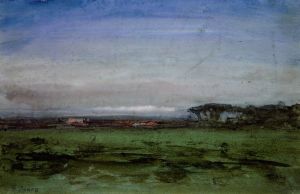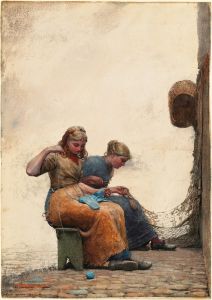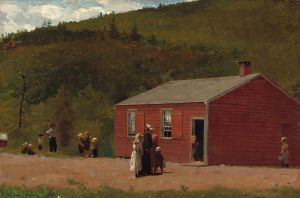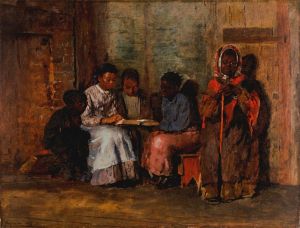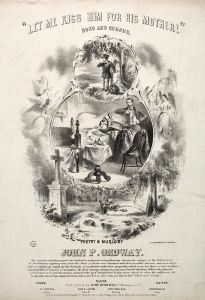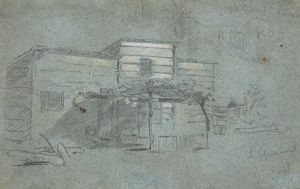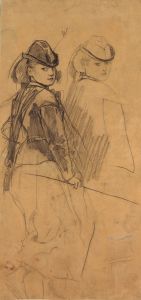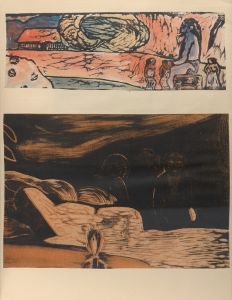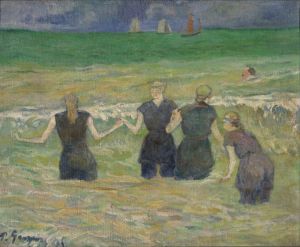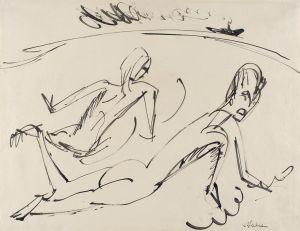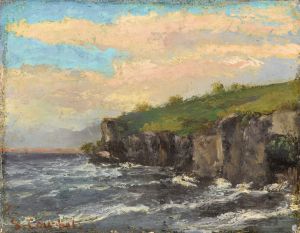
Cuban Hillside
A hand-painted replica of Winslow Homer’s masterpiece Cuban Hillside, meticulously crafted by professional artists to capture the true essence of the original. Each piece is created with museum-quality canvas and rare mineral pigments, carefully painted by experienced artists with delicate brushstrokes and rich, layered colors to perfectly recreate the texture of the original artwork. Unlike machine-printed reproductions, this hand-painted version brings the painting to life, infused with the artist’s emotions and skill in every stroke. Whether for personal collection or home decoration, it instantly elevates the artistic atmosphere of any space.
Winslow Homer, an American landscape painter and printmaker, is renowned for his marine subjects and depictions of American life. One of his lesser-known works is "Cuban Hillside," which reflects his travels and experiences outside the United States. Although there is limited information available specifically about "Cuban Hillside," understanding Homer's broader body of work and his time in Cuba can provide context for this piece.
Winslow Homer was born on February 24, 1836, in Boston, Massachusetts. He began his career as a commercial illustrator before transitioning to painting. Homer's work is characterized by its strong composition, vibrant use of color, and keen observation of nature and human activity. He is often associated with the Realism movement, capturing everyday scenes with a sense of authenticity and immediacy.
In 1885, Homer traveled to Cuba, a journey that was part of a broader exploration of the Caribbean. This trip was significant in expanding his artistic horizons and exposing him to new environments and cultures. During his time in Cuba, Homer was captivated by the island's landscapes, light, and atmosphere, which differed markedly from the American scenes he was accustomed to painting.
"Cuban Hillside" is believed to be one of the works resulting from Homer's Cuban sojourn. While specific details about the painting are scarce, it can be inferred that the piece likely captures the lush, tropical environment of the Cuban countryside. Homer's ability to convey the essence of a place through his art would have been applied to depict the unique topography and vegetation of Cuba.
Homer's Cuban works are noted for their exploration of light and shadow, a technique he mastered to convey the intense sunlight and vibrant colors of the tropics. This approach marked a departure from his earlier works, which often featured the more subdued tones of the northeastern United States. The Cuban paintings, including "Cuban Hillside," reflect a period of experimentation and growth in Homer's artistic journey.
The significance of "Cuban Hillside" lies in its representation of Homer's engagement with new subject matter and his ability to adapt his style to different environments. Although not as widely recognized as some of his other works, such as "The Gulf Stream" or "Snap the Whip," "Cuban Hillside" contributes to the understanding of Homer's development as an artist and his response to diverse cultural landscapes.
Homer's time in Cuba and the resulting artworks, including "Cuban Hillside," underscore his status as a painter who was not only deeply connected to American themes but also open to international influences. His ability to capture the spirit of a place, whether in the United States or abroad, remains a testament to his skill and vision as an artist.
In summary, while specific information about "Cuban Hillside" is limited, it is an important piece within Winslow Homer's oeuvre, reflecting his exploration of new environments and his continued evolution as a painter. The work exemplifies his interest in capturing the essence of different landscapes and his mastery of light and color, hallmarks of his enduring legacy in American art.






